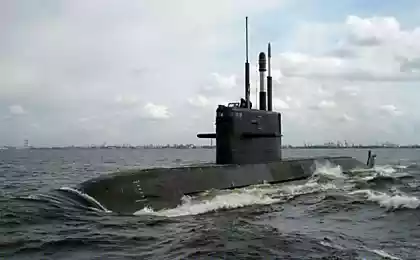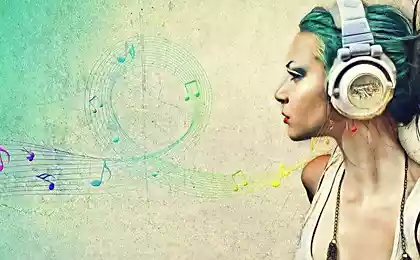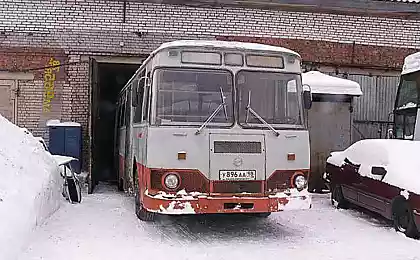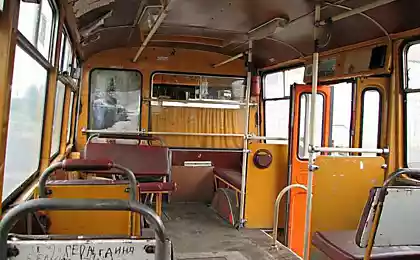1032
Bus of my childhood - LiAZ 677
LiAZ 677 - city bus production Likino Bus Plant. Produced from 1967 to 1996 (assembly on third-party companies avtobusosborochnyh of kits from 1994 to 2000). Since the beginning of the 2000s gradually decommissioned. In all there were 194 183 buses all modifications. They operated almost all regions of the former Soviet Union. Those of us who were born in the 60s - 80s of the last century, can not remember the bus. For over thirty years he has almost completely dominated the urban routes, some of which are reluctant to sharing passengers with more spacious but less maneuverable Icarus, built in the then Hungarian sister.

Bus LiAZ-677 equipped with engine modifications and ZIL-375YA7 by army truck Ural-375. It was upgraded engine ZIL 130, which crossed by increasing the working volume. Gasoline eight engine capacity 6959 cm3 has an output of 180 hp at 3200 rev / min. Rear axle - «RABA» Hungarian production. The maximum bus speed - 70 km / h.
LiAZ-677, the first experimental series, 1962-1963 gg
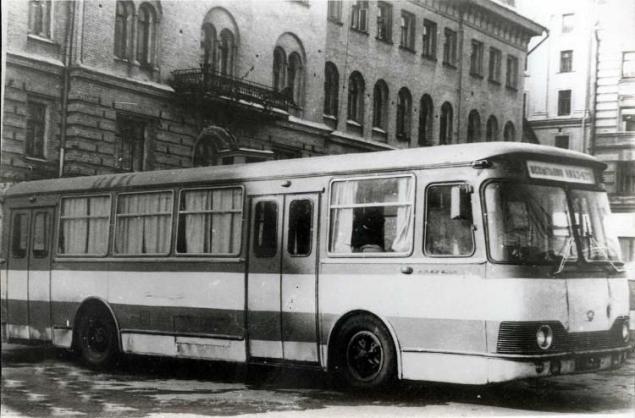
The main advantage of LiAZ-677 was that he became the first domestic buses equipped with an automatic transmission - in the depths of the body worked a two-stage hydro-box LAZ-US-035 (was upgraded designation LAZ-US-2217). Two steps at a time was enough, as present torque converter amplifies the torque and allows for a second transmission speed of 60 km / h. Today's traffic congestion at the time was not, and the speed greater than is allowed in the place, just not required. For hydrodynamic transmission LiAZ 677 loved everything - drivers and passengers: the first was not necessary, working on urban routes, continually squeeze the clutch, and the latter could go smoothly and without jerks, without risking as in "Ikarus" fall until the bus accelerates from intersection.
LiAZ 677, the second experimental series, 1964-1965

Initially, the new bus has been well received by passengers: wide doors allowed to enter the area with full bags, and the low level of the floor at the back door more and facilitates loading. Soon, however, many began to complain about the bad smell in the cabin - there was even a belief that in the interior of the exhaust gases break through underfloor exhaust pipe.
But in fact this odor was associated with the original design of the heating system: in front of the radiator cooling fan motor was associated with belt-driven motor. It blows air through the radiator. After the radiator flow of warm air supplied to the rectangular box located at the cabin floor to the left, and from there, through the slots went to the salon. That is why the air in the cabin, passing through the engine compartment, and acquire an unpleasant odor.
Serial LiAZ 677
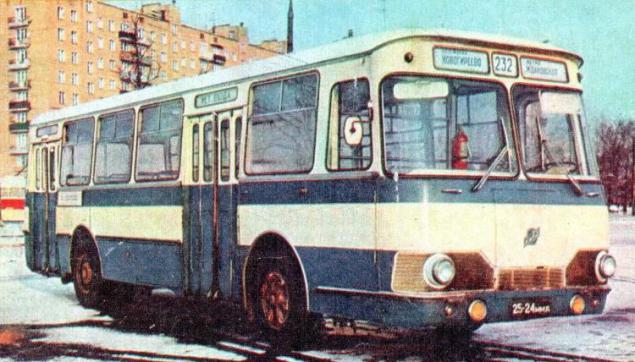
A characteristic feature of buses have been in operation, there was a loud "strum" the transmission when the bus was on the ground caused by the wear and tear of the bearings of the intermediate drive line running from the engine to the gearbox: the bus LIAZ-677 transmission is not connected to the motor in a single unit, and installed separately - that led to the shock loads on the bearings and universal joints when the engine is idling (besides even and uneven) course.

In view of the specific cross-bridge attachment to the body when cornering LiAZ 677 very careened to one side.

Numerous exhibitions were shown samples LiAZ 677 with rectangular headlights, RV were beautiful decorative caps, but these buses are standard on the domestic market were not issued - they are destined for export or for demonstration at exhibitions.
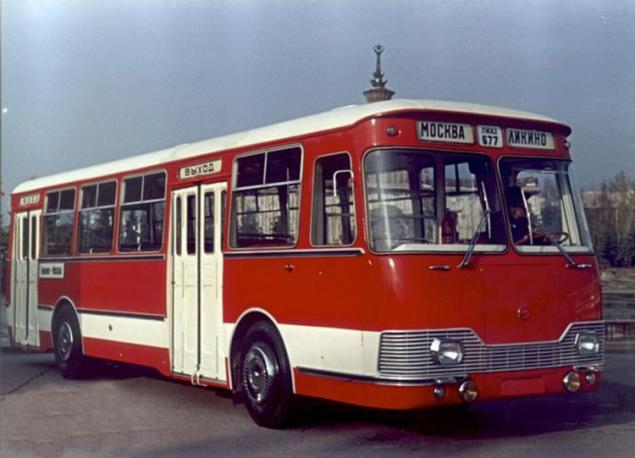
Rank bus LIAZ-677 is highly controversial, even though many at the time the bus was a good performance. In 1967, one of the first mass-produced 677-X shown at the Exhibition Center, for his creation of a group of factory workers were awarded with medals of the exhibition. Nevertheless, even the beginning of its mass production in 1968 LiAZ-677 was already outdated by bus and by its layout and operate the machine, (meaning primarily its gasoline gluttonous engine - consumption 93rd gasoline up to 50 l / 100 km), and its production capacity at the plant in the early 70's happening slowly.
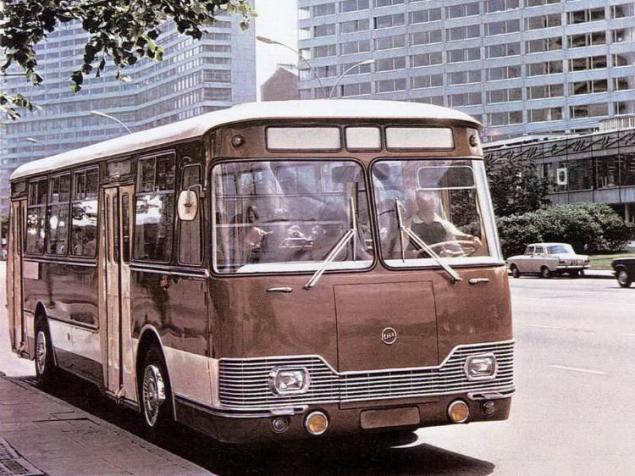
In 1972, at the International Fair in Leipzig bus LIAZ-677 was awarded the Grand Gold medal and the diploma of I degree and a year later began to export. In just 20 years, sold 7133 cars in 16 countries, but most of all in the GDR - 3308.

In some cities of the former USSR are monuments to the bus LIAZ-677.



Source:

Bus LiAZ-677 equipped with engine modifications and ZIL-375YA7 by army truck Ural-375. It was upgraded engine ZIL 130, which crossed by increasing the working volume. Gasoline eight engine capacity 6959 cm3 has an output of 180 hp at 3200 rev / min. Rear axle - «RABA» Hungarian production. The maximum bus speed - 70 km / h.
LiAZ-677, the first experimental series, 1962-1963 gg

The main advantage of LiAZ-677 was that he became the first domestic buses equipped with an automatic transmission - in the depths of the body worked a two-stage hydro-box LAZ-US-035 (was upgraded designation LAZ-US-2217). Two steps at a time was enough, as present torque converter amplifies the torque and allows for a second transmission speed of 60 km / h. Today's traffic congestion at the time was not, and the speed greater than is allowed in the place, just not required. For hydrodynamic transmission LiAZ 677 loved everything - drivers and passengers: the first was not necessary, working on urban routes, continually squeeze the clutch, and the latter could go smoothly and without jerks, without risking as in "Ikarus" fall until the bus accelerates from intersection.
LiAZ 677, the second experimental series, 1964-1965

Initially, the new bus has been well received by passengers: wide doors allowed to enter the area with full bags, and the low level of the floor at the back door more and facilitates loading. Soon, however, many began to complain about the bad smell in the cabin - there was even a belief that in the interior of the exhaust gases break through underfloor exhaust pipe.
But in fact this odor was associated with the original design of the heating system: in front of the radiator cooling fan motor was associated with belt-driven motor. It blows air through the radiator. After the radiator flow of warm air supplied to the rectangular box located at the cabin floor to the left, and from there, through the slots went to the salon. That is why the air in the cabin, passing through the engine compartment, and acquire an unpleasant odor.
Serial LiAZ 677

A characteristic feature of buses have been in operation, there was a loud "strum" the transmission when the bus was on the ground caused by the wear and tear of the bearings of the intermediate drive line running from the engine to the gearbox: the bus LIAZ-677 transmission is not connected to the motor in a single unit, and installed separately - that led to the shock loads on the bearings and universal joints when the engine is idling (besides even and uneven) course.

In view of the specific cross-bridge attachment to the body when cornering LiAZ 677 very careened to one side.

Numerous exhibitions were shown samples LiAZ 677 with rectangular headlights, RV were beautiful decorative caps, but these buses are standard on the domestic market were not issued - they are destined for export or for demonstration at exhibitions.

Rank bus LIAZ-677 is highly controversial, even though many at the time the bus was a good performance. In 1967, one of the first mass-produced 677-X shown at the Exhibition Center, for his creation of a group of factory workers were awarded with medals of the exhibition. Nevertheless, even the beginning of its mass production in 1968 LiAZ-677 was already outdated by bus and by its layout and operate the machine, (meaning primarily its gasoline gluttonous engine - consumption 93rd gasoline up to 50 l / 100 km), and its production capacity at the plant in the early 70's happening slowly.

In 1972, at the International Fair in Leipzig bus LIAZ-677 was awarded the Grand Gold medal and the diploma of I degree and a year later began to export. In just 20 years, sold 7133 cars in 16 countries, but most of all in the GDR - 3308.

In some cities of the former USSR are monuments to the bus LIAZ-677.



Source:



